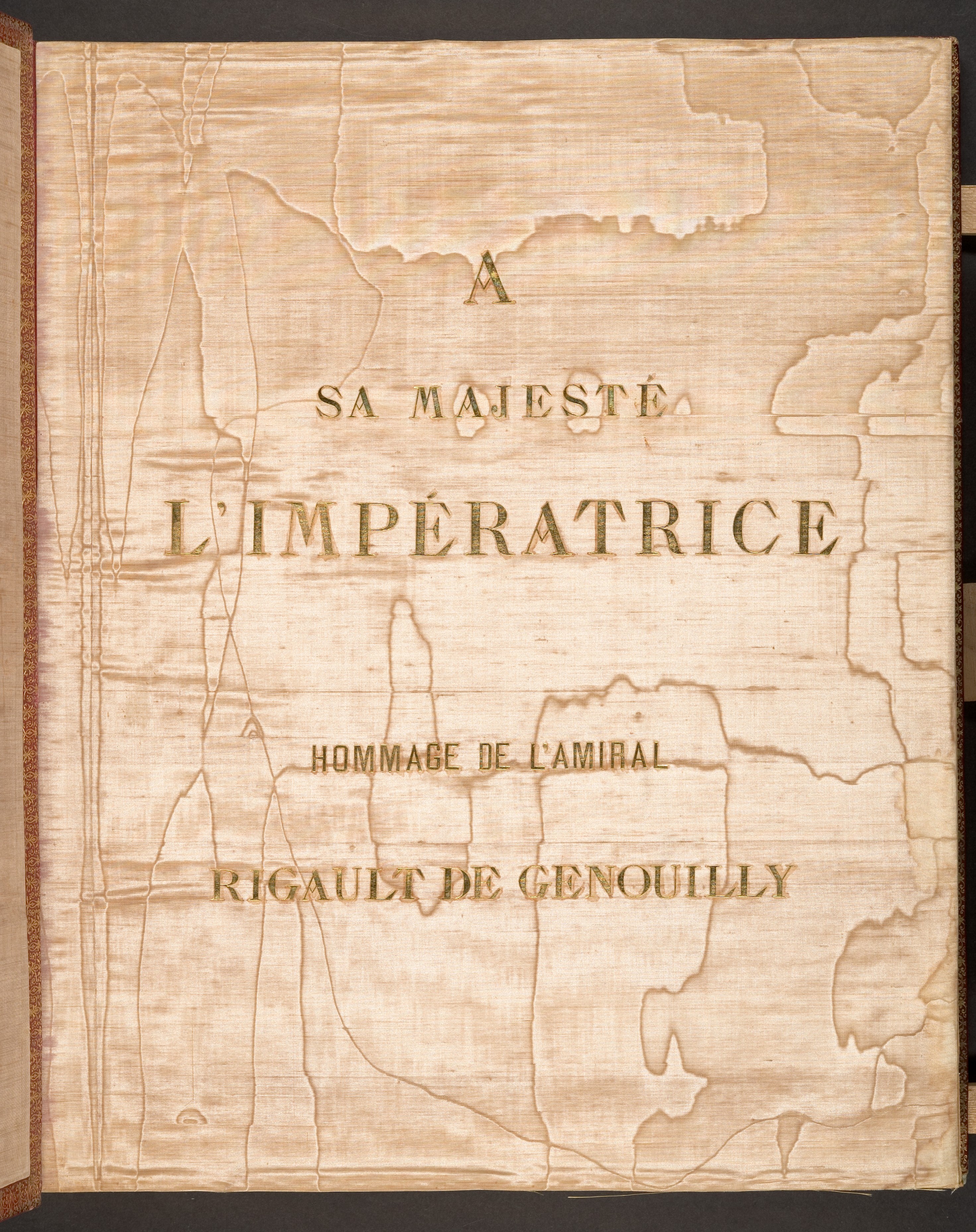Cochinchine et Cambodge
Emile Gsell French
Not on view
The conquest of Saigon in 1859 by Admiral Rigault de Genouilly and the ensuing spread of French influence through Indochina and Cambodia was the first colonial success of the Second Empire. To commemorate the achievement the admiral, having become minister of the Navy, presented Empress Eugénie in 1867 with this luxuriously bound album of photographs entitled "Cochinchine et Cambodge." Comprising twenty-six images of Indochina and twenty-one of Cambodia, the album includes fifteen views of the ruins of Angkor. The photographs were made by M. Gsell, a Frenchman stationed in Saigon, of whom nothing more is yet known except that in June 1866 he accompanied the naval captain Doudart de Lagrée on a scientific mission along the Mekong River. The mission began with a photographic survey of Angkor.
Reports of an abandoned city in the jungle had reached Europeans in 1850, and in 1863 de Lagrée conducted the first archaeological exploration of the ruins. The finest and most extensive of all Khmer monuments, Angkor Wat was built early in the twelfth century as a temple symbolizing Mount Meru, the cosmic mountain at the center of the Buddhist and Hindu universe. It had been abandoned in the eighteenth century, and by the time this photograph was made many of its buildings had been overtaken by the forest. Gsell's photographs of the main temple, its surrounding wall, and moat are rather straightforward documents that show little concern for the dramatic territorial struggle between architecture and nature embodied in the ruins. This image, however, of a corner of a court within the temple, manages to convey in its dramatic lighting and obsessive piling up of identical architectural details something of the mystery and bewildering vitality of the huge stone structure. Reminiscent in its dreamlike effect of engravings by Rodolphe Bresdin and Gustave Doré, the image was among the views chosen to illustrate, as a woodcut, the first installment of Francis Garnier's "Voyage d'Exploration en Indo-Chine, 1866-7-8," which appeared in the periodical "Le Tour du Monde in 1870."
Due to rights restrictions, this image cannot be enlarged, viewed at full screen, or downloaded.
This artwork is meant to be viewed from right to left. Scroll left to view more.



